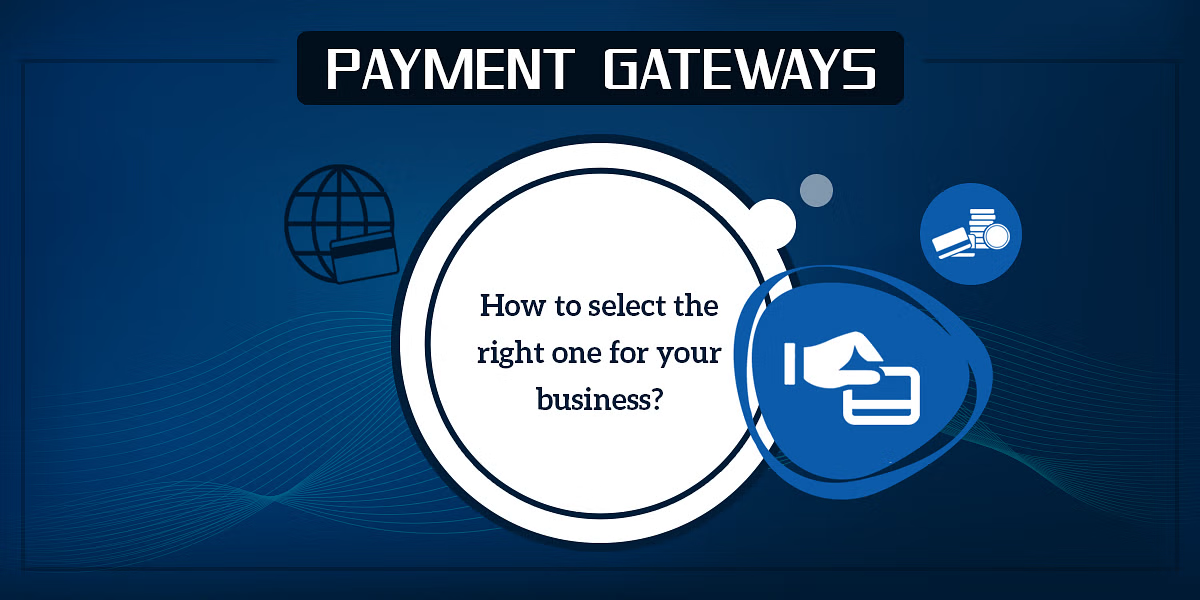Online payments are a vital component of speedy financial transactions for customers and businesses in the age of digitization. A trustworthy payment system is all that is needed for every transaction, be it a buy, sale, or even the clearing of vendor debt. In contrast, a minor payment vulnerability can present an opportunity for online criminals (hackers). As a result, selecting the appropriate payment gateway for your organization is one of the most important choices you must make.
Knowing your payment gateway’s capabilities to fend against cyberattacks and provide the necessary encryption layers between the buyer and the vendor is crucial. Your transactions are made hack-proof with the use of an efficient payment gateway technology, which also enables speedy web page load times.
What would you thus regard to be the finest payment gateway for your online store or eCommerce that will offer great ease, minimal danger, and client data assurance?
Gateways for online payments
A payment gateway, in the simplest terms, is a service utilized by the merchant to help customers make payments using credit cards and other means for online purchase of a good or service. These gateways provide a reliable link connecting user purchases and business sales.
Key Features:
- Encryption: The system is so safe that not even the shop can track the users’ payment information, including their credit card number, CVV, and other specifics. It creates a security layer (encrypted data) between the user’s browser and the company’s server.
- Authorization: Payment gateways process all transactions quickly and safely. The system already receives requests for authorization from various financial institutions and credit card providers. Therefore, there is no possibility of payment failure.
- Confirmation: The users move on to the following step after the money has been processed.
Type of Payment Gateways
There are three primary types of gateway systems that we may identify when studying payment gateways:
Redirects: With this kind of payment method, a user is transferred from the active eCommerce site to a secure page. Each payment stage is maintained on the payment gateway website, and the user can complete them by following certain processes. If you select PayPal, for instance, customers will be redirected to the PayPal website once they have completed their payment on the website or mobile app of the retailer.
The security of the payment gateway is used by merchants who employ this method, which also streamlines the entire procedure. Despite this, the merchant has less control over the payment mechanism.
Off-site payment: This is an additional streamlined approach for handling payments that makes use of third-party payment systems. The service provider secures and maintains control over the users’ data, much like redirected payment gateways do.
In off-site payments, the service provider’s backend processes the payment while the front-end checkout is still regarded to be on the merchant’s website.
The entire payment transaction won’t be under the merchant’s control through the payment gateway, either.
On-site payment: This payment option uses a unique payment system that is entirely managed by the retailer from their website or mobile application, from the point of checkout to the point of payment processing. As a result, the merchant gains additional advantages and is also responsible for the protection of user data.
For their business operations, large-scale companies typically employ this payment gateway technology.
Widely used payment gateways
- PayPal
- Square
- Stripe
- Apple Pay.
- Amazon Pay.
- Adyen
According to unique functionalities and payment criteria, each of the aforementioned payment gateways is distinguished; yet, they are all distinct from one another.
A payment gateway must also be implemented, which requires us to become familiar with and accept its constraints.
Below are some of the typical payment gateway restrictions that we have included for your convenience:
All credit cards and payment options are not accepted by them:
Despite the existence of several frequently utilized and well-known payment gateways, not all payment options are accepted by them. The types of cards or payment methods they allow are mentioned on their platform, but they hardly ever discuss the exclusions.
Understanding your target market’s purchasing habits is essential. High sales conversions from the add-to-cart feature will be the consequence, which is positive.
Overseas customers should take into account:
International prospects and clients are of primary relevance to businesses engaged in manufacturing and wholesale. A comprehensive payment system maintains you ahead of your competition if you are definitely wanting to grow your organization.
Chinese manufacturers in particular can sense this. Businesses from all around the world contact Chinese production companies but encounter payment difficulties. Typically, they speak with their bank and conduct the transfers there. Due to this circumstance, funds are received slowly, and business operations are slowed down.
Unknown security concerns:
Even on well-known online shopping sites, where everyone has the choice to shop, many are still hesitant to disclose their credit card information. No matter how robust the payment gateway we employ is, we must constantly be aware of some security risks. Modern hackers are so skilled that they can exploit any system’s weaknesses. Common cyber-attacks include the following:
Cyberattack Malware
Other issues with mobile payments
Selecting the right payment gateway partner is crucial for the success of your online business. Here are some important points to consider when evaluating potential payment gateway partners:
Security and Compliance:
- Ensure the payment gateway is Payment Card Industry Data Security Standard (PCI DSS) compliant to protect sensitive customer data.
- Look for advanced security features like tokenization and fraud detection/prevention tools.
Supported Payment Methods:
- Verify that the payment gateway supports a wide range of payment methods, including credit/debit cards, digital wallets (e.g., Apple Pay, Google Pay), and alternative payment options (e.g., PayPal, ACH, bank transfers).
Geographic Coverage:
- Confirm that the payment gateway serves your target geographic regions. Some gateways may have limitations on international transactions.
Integration Options:
- Check if the payment gateway offers APIs, SDKs, or plugins for easy integration with your website or application. A smooth integration process is essential.
User Experience:
- Evaluate the user experience of the payment process. A seamless and user-friendly checkout experience can reduce cart abandonment rates.
Mobile Responsiveness:
- Ensure that the payment gateway supports mobile payments and offers a responsive design for mobile devices, as an increasing number of transactions occur on smartphones.
Transaction Fees:
- Understand the fee structure, including transaction fees, monthly fees, setup fees, and any other hidden costs. Compare these costs with your budget and revenue projections.
Payout Timing:
- Check the payout schedule to ensure it aligns with your cash flow needs. Some gateways offer daily, weekly, or monthly payouts.
Currency Support:
- If you operate internationally, confirm that the payment gateway supports multiple currencies and can convert payments into your desired currency.
Customer Support:
- Assess the quality and availability of customer support. Timely assistance can be critical during payment processing issues or disputes.
Scalability:
- Consider your business’s growth potential and whether the payment gateway can scale with your needs. Scalability is vital for handling increased transaction volumes.
Refunds and Chargebacks:
- Understand the process for handling refunds and chargebacks. A transparent and efficient system can help maintain customer trust.
Reporting and Analytics:
- Look for reporting tools that provide insights into your transaction data. Making wise business decisions can be aided by this information.
Recurring Billing:
- If your business offers subscription services, confirm that the payment gateway supports recurring billing and subscription management.
Customization:
- Assess the level of customization and branding options available for the payment gateway’s checkout page. Brand consistency can enhance customer trust.
Contract Terms:
- Review the terms of the contract, including the duration and cancellation policies. Avoid long-term commitments that may not align with your business goals.
Reviews and Reputation:
- Research the payment gateway’s reputation by reading reviews and seeking recommendations from other businesses in your industry.
Compliance with Industry Regulations:
- Ensure that the payment gateway complies with industry-specific regulations, such as those in healthcare (HIPAA) or financial services (FinCEN).
Backup and Redundancy:
- Inquire about backup and redundancy measures in case of system failures or downtime. Business continuity is essential.
Data Ownership:
- Clarify who owns customer transaction data. You should have control over your data for analytics and customer relationship management.
Conclusion
You should use the appropriate payment gateway type (from the three stated above) if you run an online business or are just starting one and are seeking a reliable payment gateway that not only meets client needs but also benefits your business module. In order to make it more convenient for users, the system must also support a variety of payment methods (such as cards and bank transfers).




